I was stopped by a red light at a busy intersection the other day, traffic coming and going on every side, when a ring-billed gull suddenly dropped down from the sky and plucked something off the pavement right in front of me, then lifted up again, smoothly avoiding the next vehicle that surged toward it. That woke me up and grabbed my attention.
We’re so used to local “french fry gulls” wheeling over fast-food parking lots and cleaning up scraps dropped by customers that we tend to ignore their presence, right? But this was a such a cool, bold move it seemed worthy of the great Jonathan Livingston Seagull himself. And got me thinking about gulls in general, and why I should pay them more attention and respect.
There’s nothing shy and retiring about a gull. Out in the open, gregarious by nature, they scream and call and complain to each other, attention grabbers whether they’re dotting a field behind a cultivator or harassing hard-working diving ducks, trying to steal their catch. Mostly carnivorous, and feisty as humans, they reveal their intelligence by the countless ways and means they locate food, scavenging, fishing, snatching it from the air.
But telling gulls apart…? That’s my problem. Since having cataract surgery I can better see details that help identify them—head shape, bill and leg colour, wing tips--but then have to mentally sort out which species is supposed to have which, before the bird flies away. And figuring out winter plumages? Juveniles’ ever-changing garb? Good luck with that!
Gulls come in three sizes, large, medium and small, but if just one is present, how can you tell for sure? Great black-backed gulls are biggest, little gulls are the smallest, with some 48 other species of various sizes in between. Two dozen of them in North America! At least adults in breeding plumage can be sorted into two groups, white-headed or dark-hooded, which thankfully simplifies the search.
The best way to get to know gulls is to spend time watching the ones around you, so you’ll be able to notice if a different one shows up. My friends and I spent hours studying black-headed gulls at Mongolia lakes this spring, searching among them for rare relict gulls, a target we never did find. But I valued the chance to become familiar with a species I’d briefly seen in Ireland five years before.
Same with lesser black-backed gulls flying along the fjords of Norway in late June. What an opportunity, becoming comfortable with a species that always puzzles me when one shows up as a vagrant at home. There were common gulls in every village we visited from the cruise ship, a great chance to get to know these strangers, too. They supposedly nest on the ground, but Dennis and I discovered a pair using a vacant sea eagle’s nest in a tree in Eidfjord, at the tip of the Hardangerfjord.
So that’s another clue to gull identification: look for the locals wherever you are in the world. Laughing gulls, so handsome with their red beaks, black heads and white eye markings, range along Atlantic coastal waters to the south, while slightly smaller look-alike Franklin’s gulls breed in Canadian prairie sloughs, then migrate down to Utah in winter. Bonaparte’s gulls, even smaller, nest in trees of the boreal forest, so are mostly seen as flocks migrate through the Great Lakes in spring.
As with most bird families, you’ll surely have your favourites. I’d love to see a beautiful Ross’s gull of the Arctic, with its rose-pink underparts, pearl-grey wings and delicate black collar. Or a tiny, pure white ivory gull from even farther north, a species reportedly drawn to the colour red, since it scavenges the afterbirth of seal pups born on sea ice. My clever neighbour Glenn Coady tells of squirting ketchup on the snow around a can of dogfood one winter while a rare ivory gull was making its way along the Lake Ontario shore, its progress tracked by a host of birders with cell phones eager to get it on their life lists. Sure enough, the bird showed up at the feast, delighting Glenn and other witnesses.
I wish I’d been there, but have a special gull memory of my own I treasure. Of kayaking around Espiritu Santo Island far down the Baja Peninsula, a UNESCO World Heritage site, with my dear friend and fellow writer Vicki Lewis Thompson. We shared a sublime week absorbing sunshine, desert and sea. And camping on beaches where rare yellow-footed gulls hang out, a lifer for both of us.




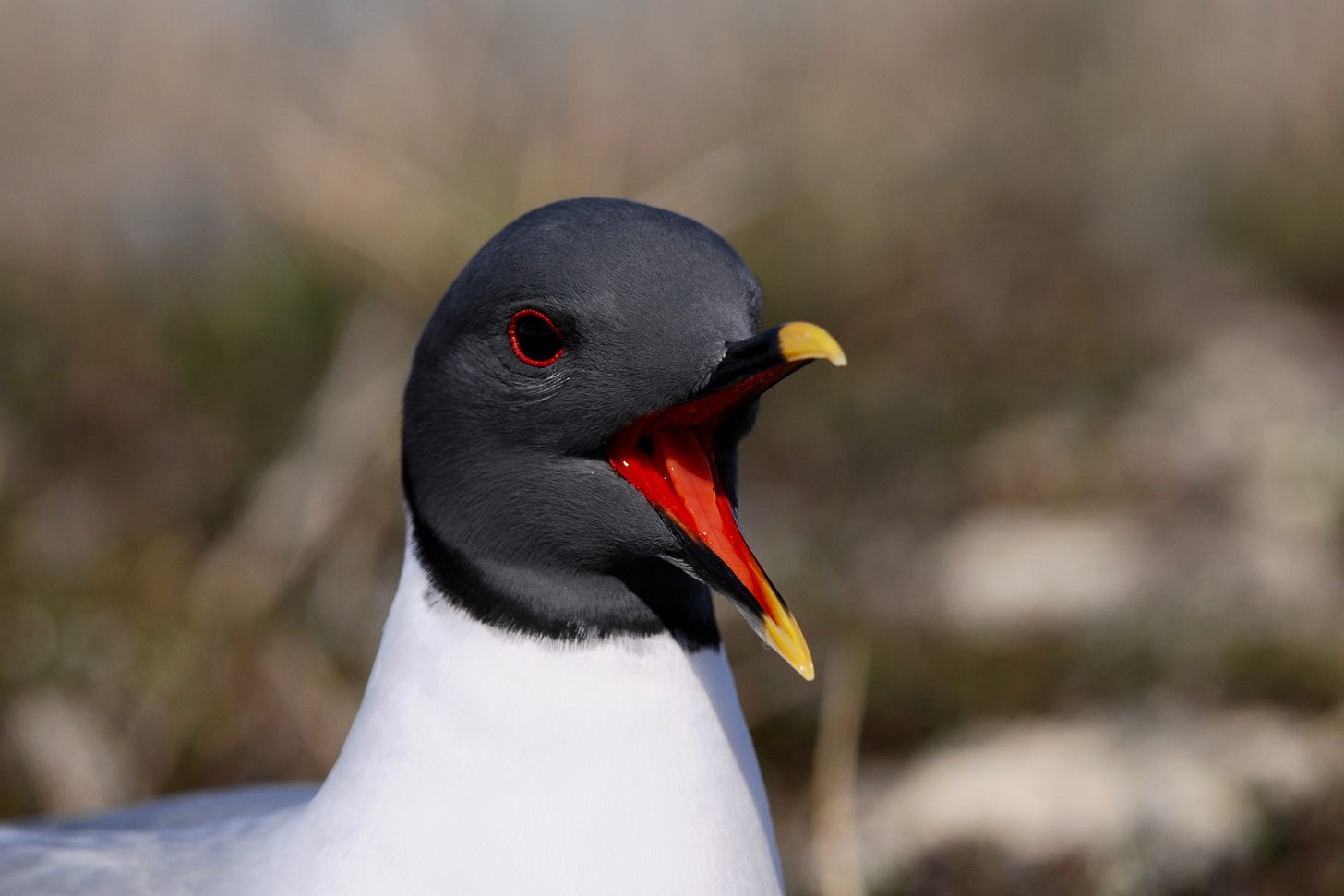
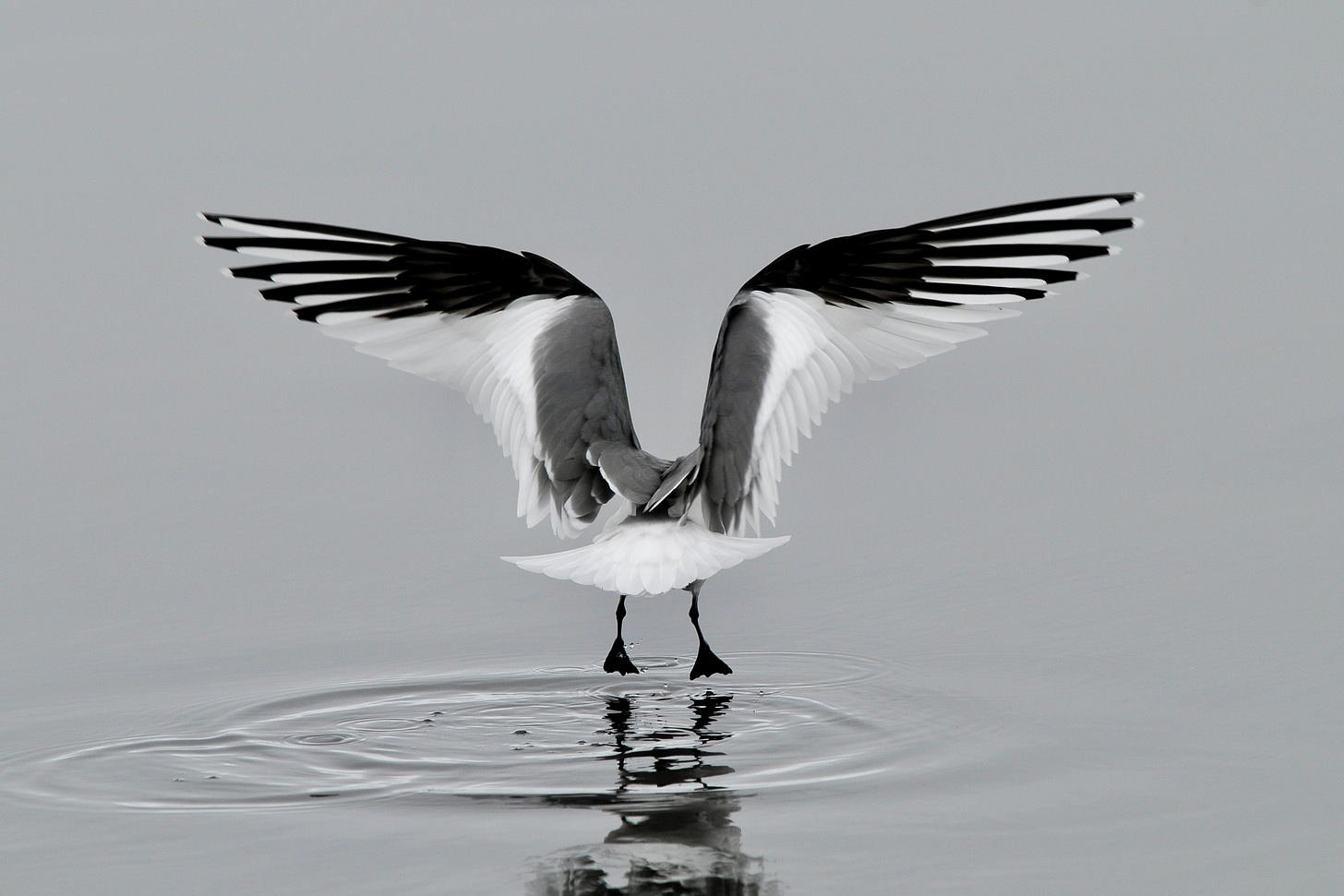
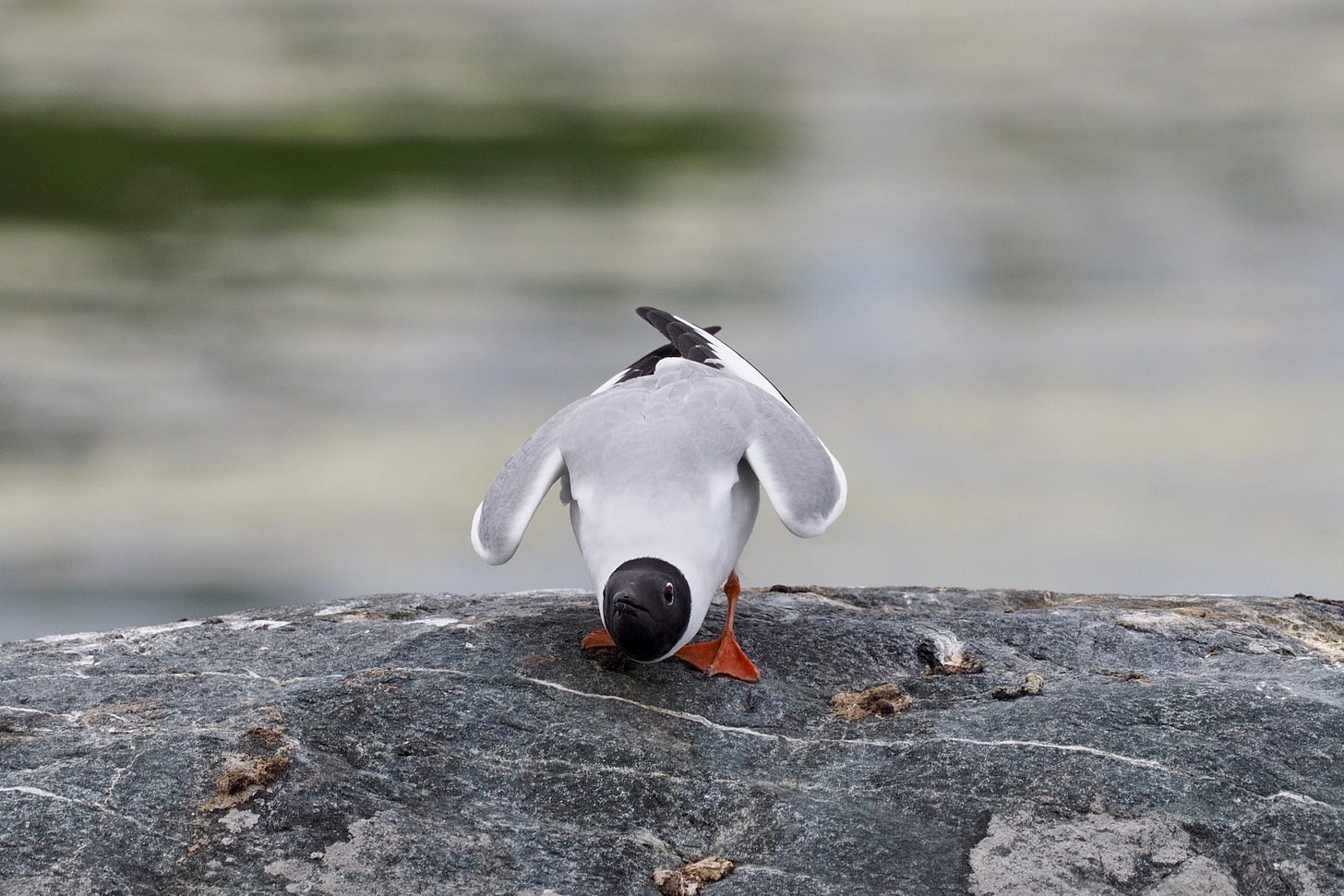
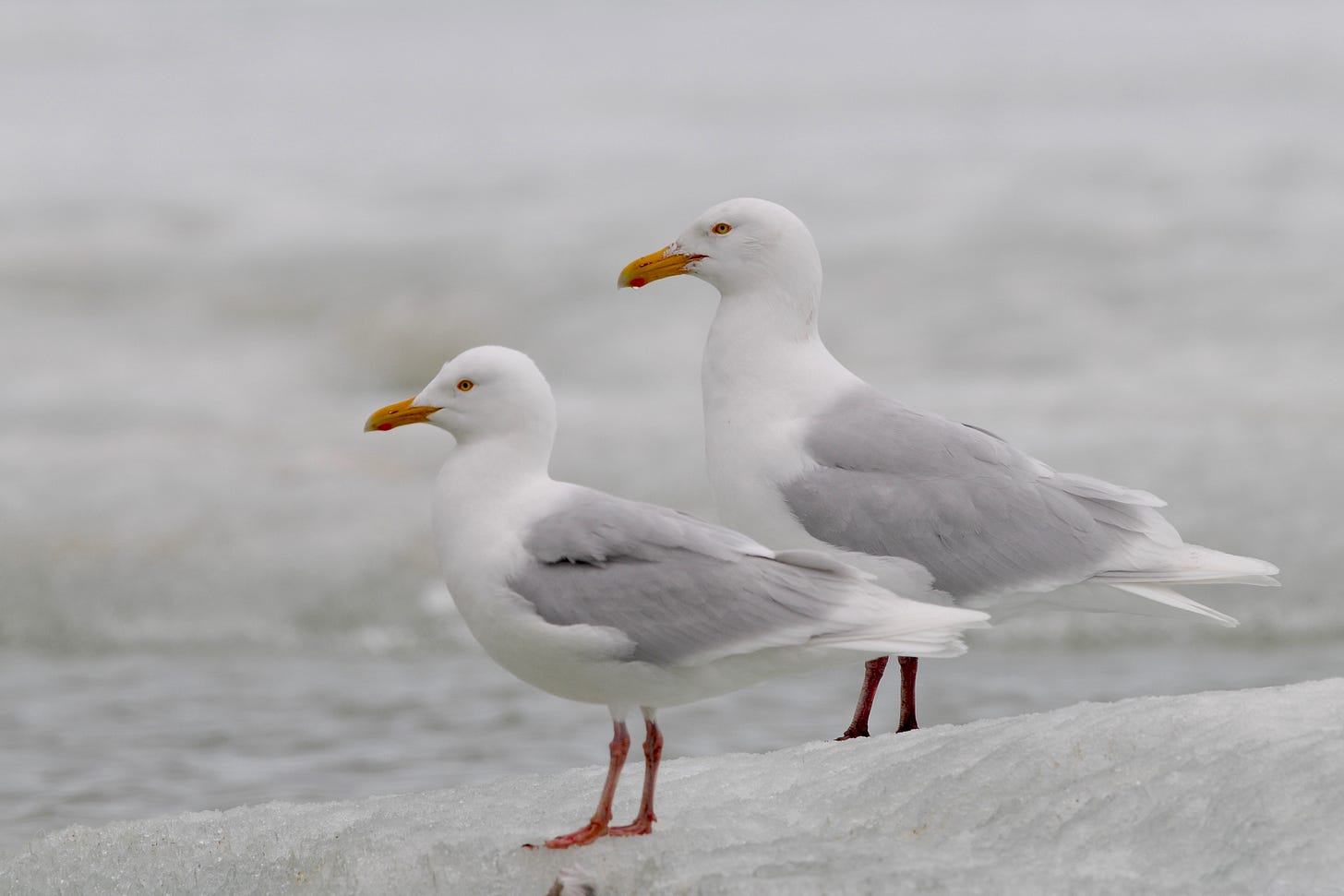

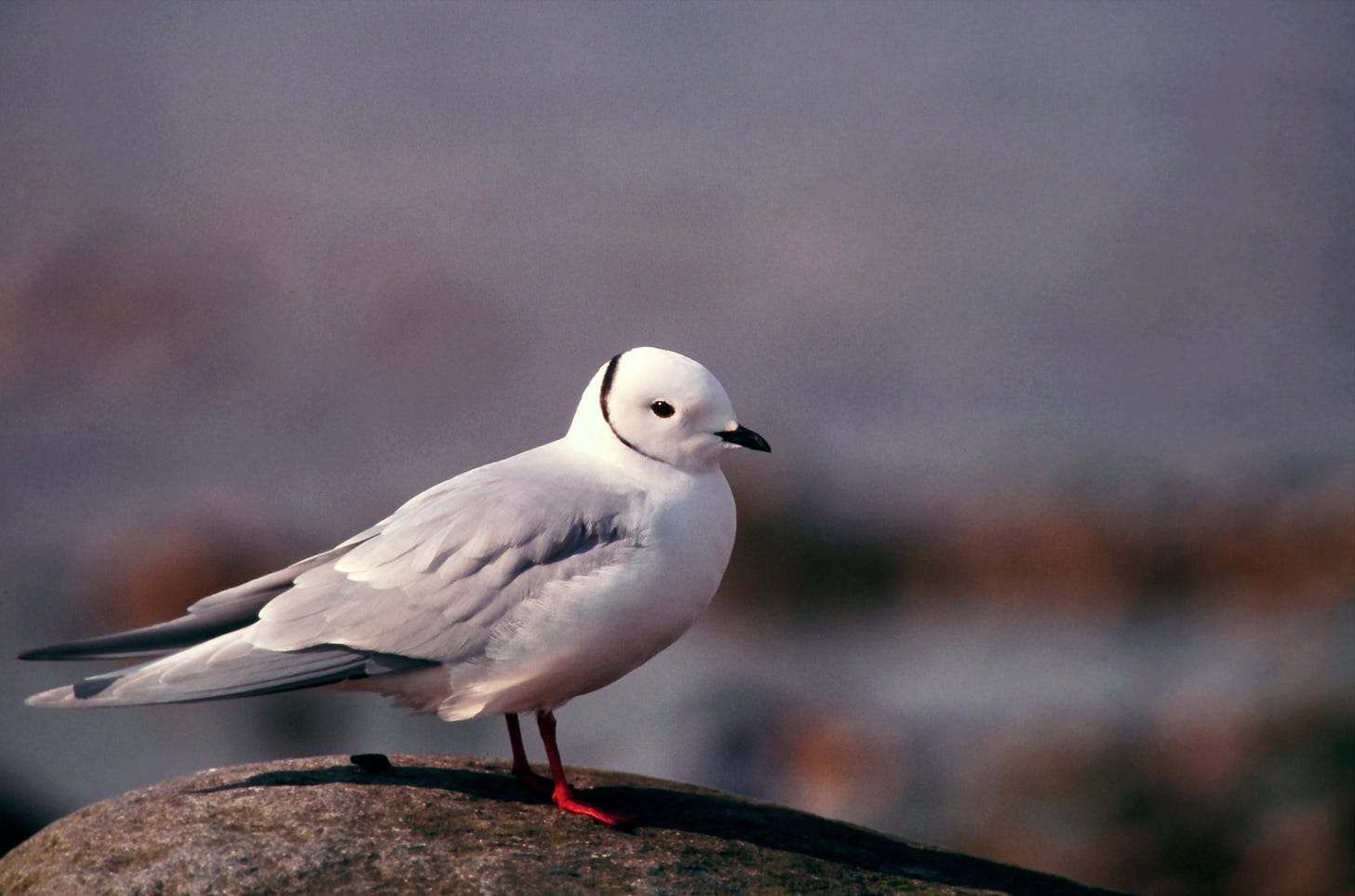
Gull darn it, Margaret! I had no idea there were that many species. One sits on our telephone pole most afternoons and sends loud messages out. Maybe it is ordering French fries!
The bonaparte gull had me in stitches🤣